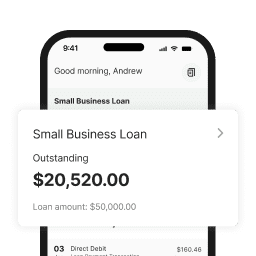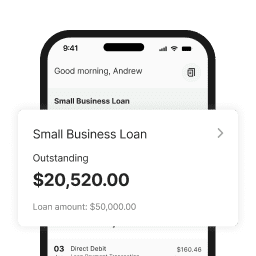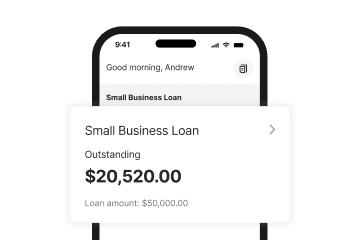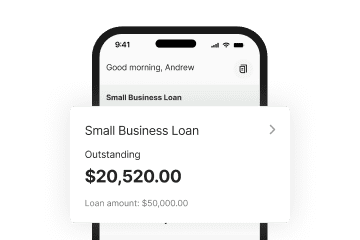In this article, Gavin Debono, Chartered Accountant and Partner at Pitcher Partners Melbourne, shares 7 proven strategies to help business owners improve cash flow management and get paid faster.
At a glance
- Late payments can hurt small business cash flow and financial viability.
- Business owners can boost cash flow with small, simple adjustments to invoicing, payment terms, and debtor management.
- Small businesses should swiftly follow up on overdue accounts to maintain healthy cash flow.
Recent data from the Australian Small Business and Family Enterprise Ombudsman shows that payment disputes now make up 42% of assistance cases, as a significant number of small businesses struggle to get paid on time. In this article, Chartered Accountant Gavin Debono shares 7 proven strategies to help business owners improve cash flow management and get paid faster.
1Invoice promptly
Late payment is often a matter of late invoicing. Small businesses that delay invoicing risk being pushed down the priority list.
Solution: Send invoices immediately after delivering goods or services to reduce cash flow gaps.
Example: Sally runs a busy graphic design business and often forgets to invoice clients immediately. By the time her clients receive the invoices, they either forget the exact service provided or prioritise other bills while waiting for cash flow. To avoid late payments, Sally now makes invoicing part of her project completion routine.
2Adjust invoice timing
Cash flow gaps can become a problem if small business owners don’t adjust their billing cycle to match the frequency of completed work.
Solution: Invoice regularly — weekly, fortnightly, or mid-month — especially for ongoing work. For long-term projects, request an upfront fee and stage payments at milestones. Make sure to add these arrangements to your business proposals and service agreements.
Example: Mark, a gardener, was recently asked by a client to do ongoing maintenance work on a fortnightly basis, in addition to the landscaping project he is completing. He decides to bill this client fortnightly for the ongoing work along with the payment plan for the landscaping project. This helps him avoid being out of pocket for long periods and gives him more certainty of future cash flow.
3Adjust payment terms and use cash flow loans
Longer payment terms, such as 30 days or more, increase the risk of late payments and make it difficult to manage cash flow.
Solution: If possible, reduce your payment terms to 7 or 14 days. Some clients may have set days for paying invoices but it is possible to negotiate terms that favour everyone. To improve cash flow throughout the entire business cycle and their small business finance, owners may consider small business loans.
Example: Laura is a wholesaler who is currently facing an average working capital cycle of 120 days. From the time of placing the order to the overseas factory to paying the deposit, waiting for the goods to ship to Australia and then waiting for the goods to be delivered to the customer, Laura has to contend with long periods of restricted cash flow. To improve her cash flow, Laura actively negotiated shorter payment terms with key customers.
4Make sure your invoices are compliant
Invoices can be delayed because the invoice isn’t lodged correctly, sent to the right people, or doesn’t meet the customer’s requirements.
Solution: Make sure that invoices are easy to understand, error-free, and include:
- Due dates
- Payment options
- Reference numbers
- ABN
Send your invoices to the correct person responsible for payments and confirm any specific invoicing requirements clients may have.
Example: Julie sends her client an invoice but does not receive payment for weeks. On following up she discovers that she had emailed her invoice to the wrong person. When she does finally issue a bill to the account manager she is told she has to format the bill to fit with company specifications. Julie fixes her invoice format, sends it, and is promptly paid.
5Automate invoicing
Small business owners with a large volume of repetitive tasks may struggle to make time for admin and invoicing. In these situations, billing often slips under the radar, resulting in missed income.
Solution: Invoicing platforms will often feature automatic payment follow up notifications to remind customers of overdue payments as well as upcoming payments. Before sending, review the system’s templates and adjust them to fit your tone and terms.
Example: As the owner of a cleaning business John cleans multiple houses every day but doesn’t always have time to issue invoices between jobs. He decides to use an invoicing platform to set up automatic billing to save time.
6Offer multiple payment options
Customers tend to have varying needs and comfort levels with different payment options. Receiving the funds on time often outweighs the transaction fees.
Solution: Make it easier for customers to pay by providing them with the options they prefer, whether it’s by credit card, bank transfer, or PayPal.
Example: Adam the mobile physiotherapist only issues invoices with his bank details available for payment to avoid merchant fees, but finds some clients take longer to pay because they may not have the available funds. He decides to switch to an invoicing platform which offers credit card payments, allowing his customers to pay him faster.
7Regularly review and follow up accounts
Never ignore overdue invoices as this could worsen your cash flow. Business owners should keep a close eye on their incomings and outgoings to keep things running smoothly.
Solution: Regularly review outstanding invoices and reach out to customers early to find out what issues are preventing them from paying. If needed, consider outsourcing to specialists to recover outstanding debt.
Example: Josh, who runs a dog grooming business, neglects to follow up on outstanding bills. When he finds he is short on money to pay for this month’s grooming supplies, he realises he has several outstanding invoices from long term clients. By actively following up with clients, he recovers $50,000 in overdue payments which completely closes his cash flow gap.
Need to simplify your cash flow? With Prospa Line of Credit, you can access $2K to $500K and pay interest only on what you use. Learn more about Prospa’s Line of Credit.








